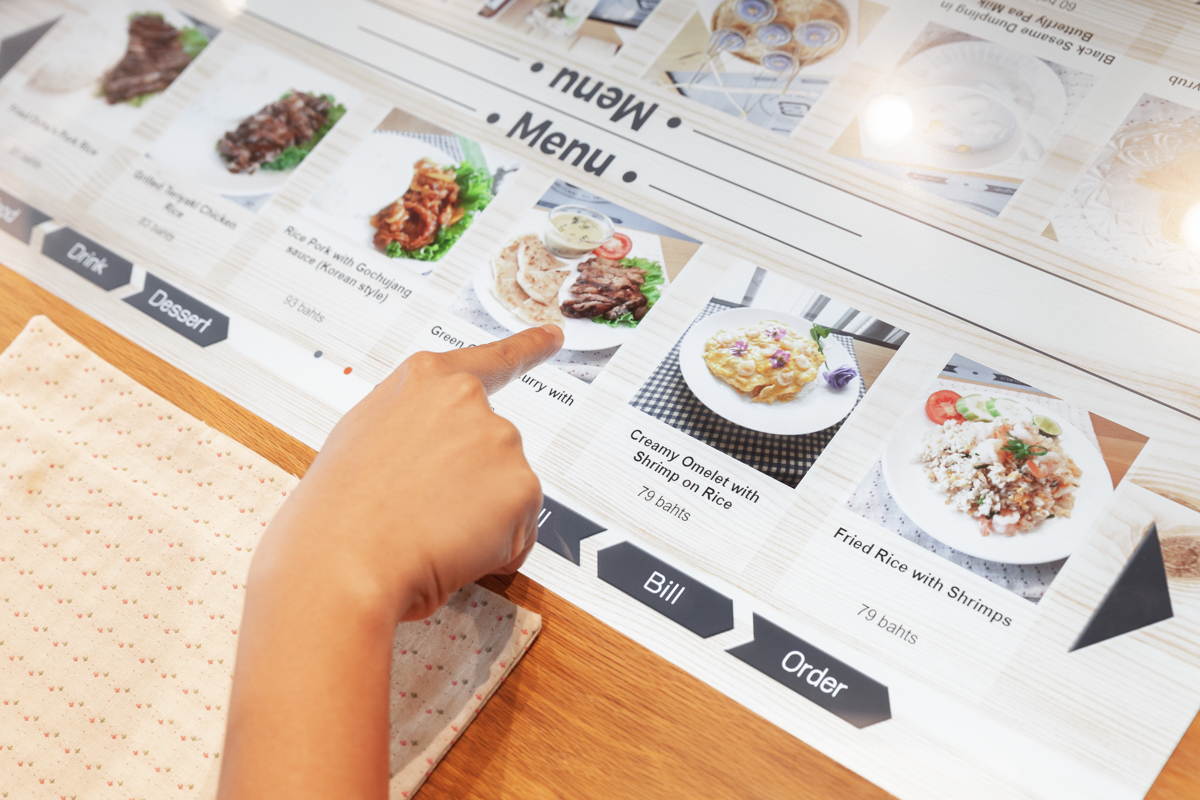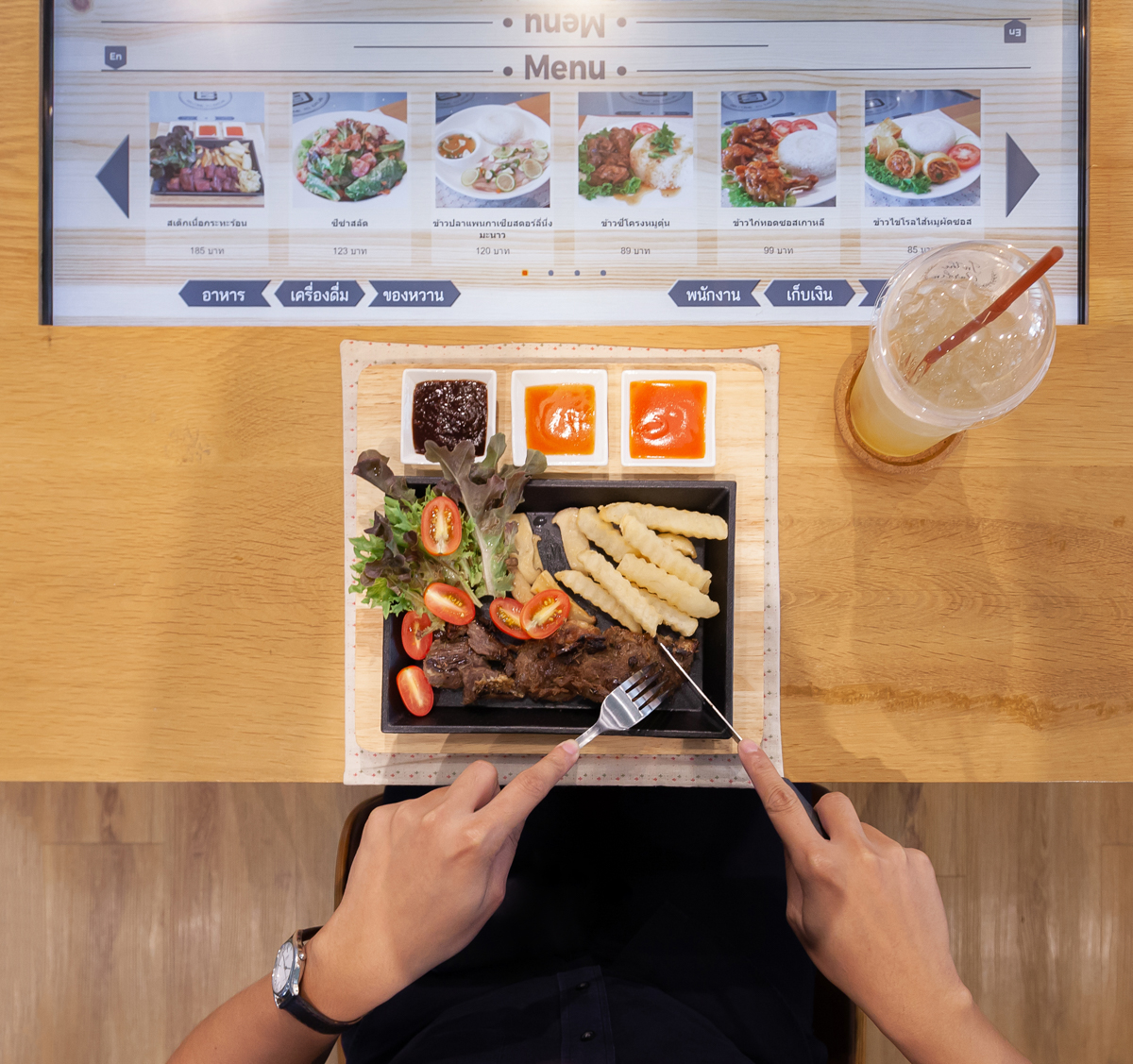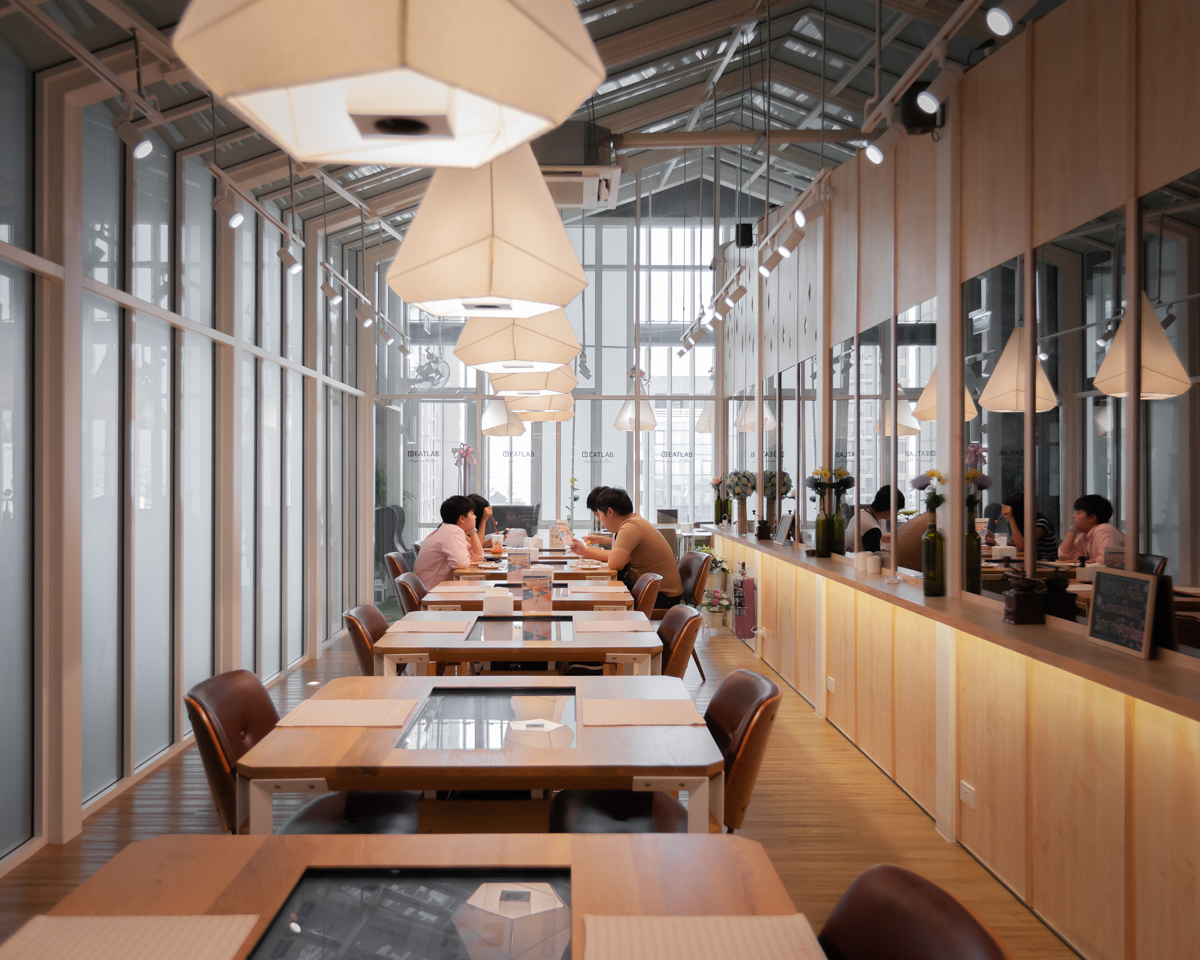Using AI and blockchain technology, Chanikarn Wongviriyawong operates her eating laboratory startup with an aim to push the Thai food industry forward.

The food reviewing culture has seen a continuous evolution, from a small scoop in a newspaper or a segment on a radio station to a television show and the Internet where consumers are offered both a platform and a role within the media in equal portion. There are many possible reasons for the seemingly endless reviews of food and restaurants (we suspect that the culture is going to keep on evolving). One of these is perhaps that food is one of the basic needs of humans, two is the constant emergence of new restaurants and three is, with all the countless reviews out there, the fact that none of them give the final answer in regards to what’s good or what’s bad (especially in Thai society where a straightforward critique is rarely a norm), the difficulty of assessing what’s considered delicious is the ‘uncertainty’ of it. The word delicious and the personal taste of a reviewer are subjective and they are the reason why deliciousness isn’t really scientific.
Data scientist, Chanikarn Wongviriyawong proposes a different perspective. She sees the possibility of evaluating the delicious rate of food. Such perspective originates from her educational background in Data Science from Massachusetts Institute of Technology (MIT). She sees everything around her in numbers and as data that can be scientifically analyzed. That, in combination with her interest in the word ‘happiness,’ led her down this route of inquiry. “Happiness is very difficult to measure. Each individual has his or her own definition of happiness. Some people’s happiness lies in the amount of money they have but we all know that isn’t always the case,” explained Wongviriyawong to art4d. From that point on, she began to count ‘deliciousness’ as a universal form of happiness (because she, too, gains happiness from eating) and began to design a way to document the ‘happiness’ happening while she was eating, and using ‘happiness’ to measure which dish tasted better.
In July of 2018, Wongviriyawong opened EATLAB in the KX – Knowledge Exchange building of King Mongkut’s University of Technology Thonburi as a laboratory/restaurant where she collects data from the clients’ satisfaction in their meal. The data collection conducted here is different from most where questionnaires are often used as a tool despite the inaccuracy of the results caused by variations such as paid reviewers or prejudiced opinions. The most important principle of EATLAB is the data collection which takes place while people are unknowingly ordering food from the computer screen at the table (before making any order, every customer is asked to agree yes to the terms and conditions). During the meal, our dining behaviors will be observed and recorded by a camera installed above the table as well as the scale installed underneath each placemat.
The limitation of EATLAB is the location. While KX-Knowledge Exchange holds events almost every week, causing the diversity of the people who visit the restaurant to be at a satisfying level, EATLAB’s future plan is to situate itself in a place where there’s a greater demographic diversity. “Siam? I think the majority of people who go to Siam are teenagers. The space that attracts the most diverse crowd I think would be one of the shopping malls in one of Bangkok’s suburbs. If the technology becomes widely adopted in the future, the data about our eating and taste preferences will be stored in the database of every restaurant, and when we visit a restaurant, the chef will know immediately what kind of flavors we like in our food,” said Wongviriyawong.

วัฒนธรรมการรีวิวอาหารมีวิวัฒนาการอย่างต่อเนื่อง ตั้งแต่สกู๊ปย่อยในหนังสือพิมพ์ ระหว่างรายการวิทยุ ทางรายการโทรทัศน์ มาจนถึงยุคปัจจุบันบนอินเตอร์เน็ตที่เปิดโอกาสให้ผู้บริโภคเปลี่ยนบทบาทของตัวเองมาเป็น “สื่อ” ได้อย่างเสมอภาค สาเหตุที่เรารีวิวมันได้ไม่จบไม่สิ้น (และคาดว่าวัฒนธรรมนี้จะมีต่อไปเรื่อยๆ) มาจากหลายสาเหตุ หนึ่ง อาหารเป็นปัจจัยสี่ที่มนุษย์ขาดไม่ได้ ต่อเนื่องไปยังเหตุผลที่สองคือการผุดขึ้นตลอดเวลาของร้านอาหารใหม่ๆ และสามนั่นคือ ในบรรดารีวิวทั้งหลายนั้น ไม่มีริวิวอันไหนเลยที่เป็นคำตอบสุดท้ายที่ชี้ชัดว่าอันไหนดีอันไหนไม่ดี (ยิ่งด้วยในสังคมขี้เกรงใจแบบไทยๆ) ความยากของการประเมินค่าความอร่อย อยู่ที่ความ “ไม่ตายตัว” ของคำว่าอร่อยและรสนิยมของผู้รีวิวเรียกรวมๆ ได้ว่าเป็นเรื่องอัตวิสัยล้วนๆ ที่ทำให้ความอร่อยไม่เป็นวิทยาศาสตร์
ชนิกานต์ ว่องวิริยะวงศ์ นักวิทยาศาสตร์ข้อมูลกลับมีมุมมองที่ต่างออกไป เธอเห็นความเป็นไปได้ในการประเมินค่าความอร่อยของอาหาร มุมมองที่ว่านี้มีที่มาจากแบคกราวน์ทางการศึกษาด้าน Data Science จาก Massachusetts Institute of Technology (MIT) ที่ทำให้เธอมองเห็นทุกๆ อย่างรอบกายเป็นตัวเลขและข้อมูลที่สามารถเอามาวิเคราะห์ได้หมด บวกกับความสนใจในคำาว่า “ความสุข” เธอบอกกับ art4d ว่า “เพราะความสุขมันเป็นสิ่งที่วัดค่าได้ยากมาก ต่างคนก็มีนิยามของความสุขที่ต่างกันออกไป บางคนคิดว่ามันคือจำนวนเงิน แต่อันที่จริงก็ไม่ถูกเสียทีเดียว” จากจุดนี้เธอจึงนับ “ความอร่อย” ว่าเป็นความสุขแบบหนึ่งที่มีความเป็นสากล (เพราะเธอเองก็มีความสุขในการกิน) และออกแบบวิธีการเก็บบันทึก “ความสุข” ที่เกิดขึ้นระหว่างการกิน เพื่อใช้ความสุขเป็นมาตรวัดว่าอาหารจานไหนอร่อยกว่ากัน
ตั้งแต่เดือนกรกฎาคมที่ผ่านมา ชนิกานต์เปิด EATLAB ขึ้นบนตึก KX – Knowledge Exchange มหาวิทยาลัยเทคโนโลยีพระจอมเกล้ากรุงธนบุรี เป็นห้องทดลอง / ร้านอาหารสำหรับเก็บข้อมูลความพึงพอใจต่อรสชาติอาหารของลูกค้า วิธีการเก็บข้อมูลที่นี่แตกต่างไปจากแบบปกติ ที่มักใช้วิธีการตอบแบบสอบถามซึ่งหลายๆ ครั้งมีปัญหาเรื่องความเที่ยงตรง ไม่ว่าจะเป็นการรับจ้างรีวิว หรือให้ความคิดเห็นที่มีอคติเจือปน หลักการสำคัญที่สุดของ EATLAB คือการเก็บข้อมูลโดยที่ผู้กินไม่รู้ตัว เริ่มตั้งแต่การสั่งอาหารผ่านจอคอมพิวเตอร์บนโต๊ะ (ก่อนหน้าจะสั่งอาหารจะต้องอ่านรายละเอียดข้อตกลงและกดยอมรับก่อน) ระหว่างการกินอาหาร พฤติกรรมการกินของเราจะถูกสังเกตการณ์และบันทึกด้วยกล้องที่ติดไว้เหนือโต๊ะ และเครื่องชั่งน้ำหนักที่ติดซ่อนไว้ใต้แผ่นรองจาน
ข้อจำกัดของ EATLAB ตอนนี้คือสถานที่ตั้ง ถึงแม้ KX – Knowleadge Exchange จะมีอีเวนต์จัดขึ้นแทบทุกอาทิตย์ซึ่งทำให้กลุ่มลูกค้าที่แวะเวียนเข้ามาที่ EATLAB มีความหลากหลายในระดับที่น่าพอใจ แผนการในอนาคตของ EATLAB คือการพาตัวเองไปตั้งในสถานที่ที่มีการหมุนเวียนของคนหลายกลุ่ม “สยามหรอ? เรามองว่าสยามมีแต่วัยรุ่น พื้นที่ที่เราคิดว่าหลากหลายที่สุดน่าจะเป็นในห้างสรรพสินค้าชานเมืองสักแห่ง ต่อไปในอนาคต ถ้าเทคโนโลยีนี้ถูกใช้อย่างแพร่หลาย ข้อมูลรสนิยมการกินของเราจะอยู่ในคลังข้อมูลของร้านอาหารทุกร้าน ทีนี้เวลาเราเข้าไปกินอาหารร้านไหน พ่อครัวก็จะรู้ทันทีเลยว่าเราชอบกินรสชาติแบบไหน” ชนิกานต์ทิ้งท้าย

Read the full article on art4d No.263 | Click Here
TEXT: NAPAT CHARITBUTRA
PHOTO: KETSIREE WONGWAN
eatlab.space

